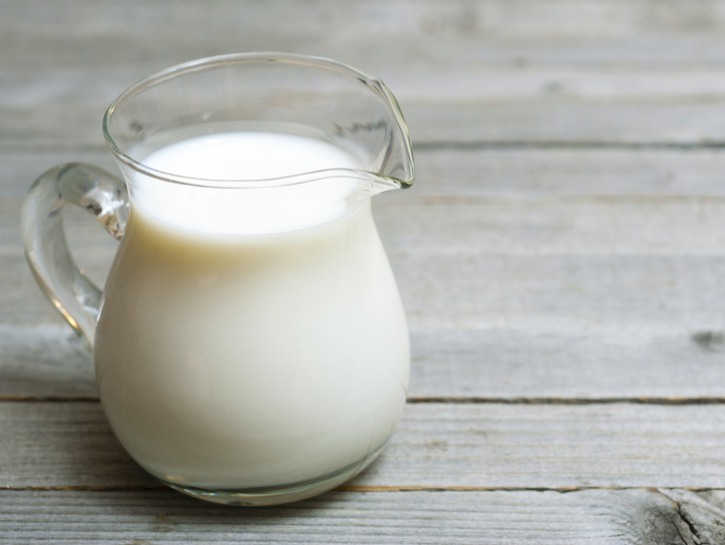Finding a good buttermilk substitute is critical when you don’t have any actual buttermilk. Buttermilk makes good biscuits great, simple salad dressings into creamy delights, and fried goods somehow even better. But since it’s kind of a pain to keep yet another dairy product in your fridge when pancakes or biscuits aren’t a daily deal and running to the store mid-recipe is a no-go, we can rely on two simple ingredients for this easy substitute when a recipe calls for buttermilk.
How To Substitute For Buttermilk
Finding a buttermilk replacement involves the two major components of buttermilk: milk and acid. Our number one replacement is known as acidified buttermilk, as opposed to the classic cultured buttermilk.
The Recipe
- Measure one cup of milk and one tablespoon of white vinegar or lemon juice OR one and a half teaspoons cream of tartar.
- Pour them into a bowl together and stir to combine.
- Let the mixture stand until the milk is slightly thickened and bits have curdled — this takes around 5 minutes, but we’d recommend waiting 10.
- Once the mixture is ready, stir it together until you can’t see the curds.
- Then just use the liquid as you would use the buttermilk in the recipe.

romantitov/Shutterstock
Why It Works
Cultured buttermilk involves adding a specific type of bacteria to milk. This bacteria consumes the sugars in the milk and produces lactic acid (yes, the kind you deal with after exercising). Over time, the milk becomes more acidic and begins to curdle. Once the milk and curds are mixed together, it becomes buttermilk.
This is why buttermilk has a natural sour and slightly acidic taste. By mixing something acidic into milk, it produces the closest possible substitute. The milk and acid mixture won’t be as creamy or thick as regular buttermilk. but it produces very similar flavors and produces the same fluffy result in whatever you’re making.
Other Buttermilk Substitutes
While acidified buttermilk is going to be your best bet most of the time, there are other alternatives.
If you’ve got plain yogurt (Greek or regular) or sour cream, you’ve got some of the same tart flavors present in buttermilk. Thin out the dairy product with a little water; we’d recommend starting with 3/4 cup of dairy and a few tablespoons of water. You should be good to go once it’s achieved a consistency similar to buttermilk (slightly thicker than regular milk).

For vegans or people looking to avoid lactose, it’s possible to make a soy milk version of acidified buttermilk. According to Loving It Vegan, simply follow the same recipe above, but replace milk with soy milk.
Like with the other substitutes, it won’t be an exact replica of the flavor of true buttermilk, but it’s way better than skipping it. Unfortunately, it doesn’t quite work with every milk alternative, so it may take some experimentation.
Buttermilk Recipes
It’s impossible to not have your mouth water at the words “buttermilk biscuit,” and we don’t just mean that because we thought about eating a Popeye’s buttermilk biscuit without a drink. We simply swap out the milk in our favorite biscuit recipe for buttermilk for a tender, crumbly, buttery texture that makes breakfast even better. These biscuits are capable of standing up to everything from eggs and bacon to the thickest sausage gravy.
When it’s used to make pancakes, the buttermilk has a fizzy reaction with the baking soda that makes the finished product light, fluffy, and airy. The baking soda also neutralizes the buttermilk’s sour, acidic taste during this process. It’s why we love making Copycat IHOP Pancakes more than any box mix.

If you’re looking to really evoke some true Southern flavors, then cornbread is the way to go. Pair it with some collard greens and fried chicken for a Southern classic. If you want to feed a crowd, whip up a batch of chili for a hearty meal.
One of the other great uses for buttermilk is in our butter cake recipe, where butter and sugar combine to make a perfectly rich and decadent cake. If you’re looking for a different flavor, Classic Red Velvet Cake is the way to go.
